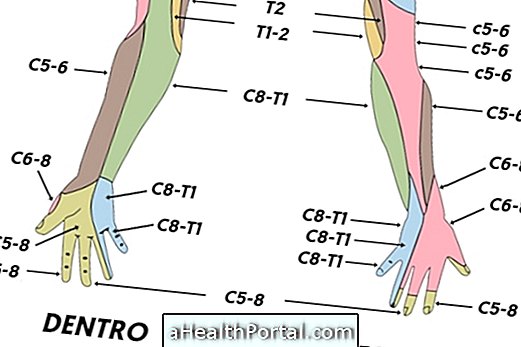Raising a bedridden patient may be easier by following proper techniques that not only help to make less force, avoiding injuries to the caregiver's back, but also increase patient comfort and well-being. One of the secrets to not getting hurt is to bend your knees and force your legs, every time you need to move the patient, avoiding forcing the spine.
Usually, advanced patients with degenerative diseases, such as Alzheimer's, Parkinson's or Amyotrophic Lateral Sclerosis, for example, need to be raised from bed regularly to avoid muscle and joint atrophies, as well as sores on the skin, known as bedsores.
Here are the key care you should take with a bedridden patient: How to care for the bedridden person.
Watch this step by step we describe in detail:

It is possible that only one person can raise the bedridden patient, however, it is recommended that if the patient does not have the strength to help, the survey is done by 2 people.
9 steps to lift a bedridden person
To raise a bedridden person easily and with less effort:
1. Place a wheelchair or armchair next to the bed and lock the wheels of the chair, or lean against the wall so that it does not move.

2. With the patient still lying down, drag him to the edge of the bed, placing both arms under the body.

3. Place the arm under the patient's back at shoulder height.

4. With your other hand, grasp the patient's armpit and sit on the bed. For this step, the caregiver should bend the legs, keep the back straight by stretching the legs while lifting the patient.

5. Hold your hand supporting the patient's back and pull the knees out of the bed by rotating it to sit with your legs hanging on the edge of the bed.

6. Drag it until the patient's feet are flat on the floor.

7. Embrace the patient and, without letting him lie down again, hold him from behind, on the waistband of his pants. But if possible, ask him to cling to his neck, interlocking his hands.

8. Lift the patient as you rotate your body toward the wheelchair or armchair, and drop it as slowly as possible on the seat.

9. To make it more comfortable adjust the patient's position by pulling it against the back of the chair, or the armchair, wrapping the arms around you like a hug.

The bedridden patient should be moved from bed to chair, and vice versa, every 2 hours, lying in bed only at bedtime.
Generally, the wheelchair or the armchair should be placed next to the bedside on the side where the patient is strongest. That is, if the patient has had a stroke and has more strength on the right side of the body, the chair should be placed on the right side of the bed and lifting should be done on that side, for example.
Raising the patient is a very important daily activity that, besides avoiding the formation of wounds on the back, allows to maintain the amplitude of some joints avoiding muscular atrophy.
Know how to do other important care for the bedridden person:
- How to become a bedridden person
- How to wash a bedridden person's hair
























